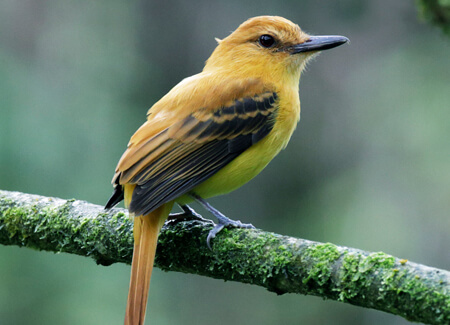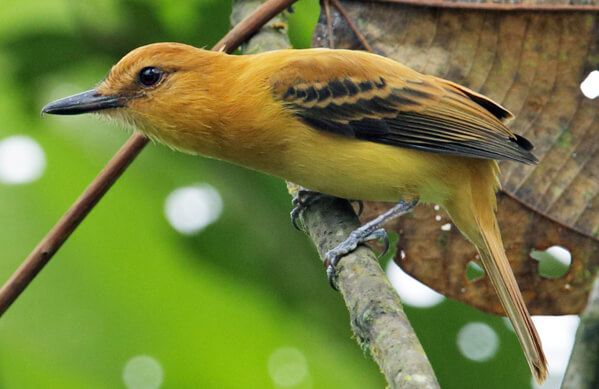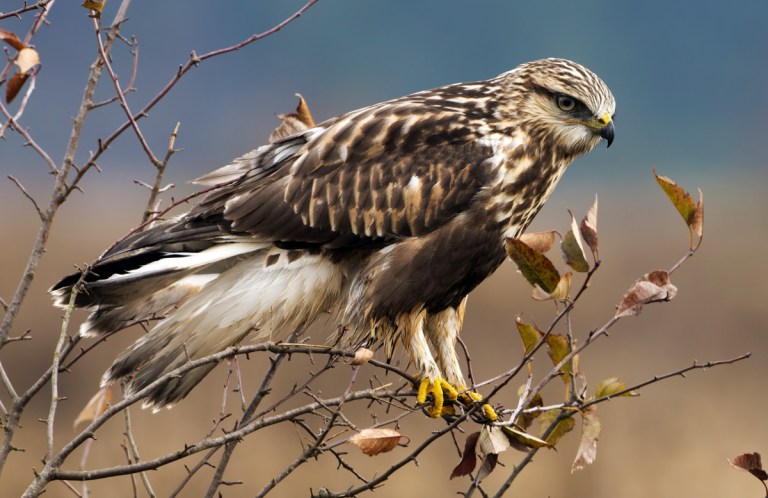 The Ochraceous Attila, named for its yellow-orange color, belongs to a genus of tyrant flycatchers with large heads and hooked bills. They are particularly predatory and aggressive—hence their scientific and common name, Attila, which refers to Attila the Hun.
The Ochraceous Attila, named for its yellow-orange color, belongs to a genus of tyrant flycatchers with large heads and hooked bills. They are particularly predatory and aggressive—hence their scientific and common name, Attila, which refers to Attila the Hun.
It can be found at several Ecuadorian reserves owned and managed by ABC's in-country partner Fundación Jocotoco, including Buenaventura, where it occurs alongside the endangered El Oro Parakeet, and Río Canandé, which also shelters the Scarlet-breasted Dacnis and Great Green Macaw.
Ochraceous Attilas tend to remain inconspicuous, even when perched in the open, but they often give themselves away with loud, persistent whistles. The birds consume mainly fruit and arthropods, although frogs and lizards are commonly fed to nestlings.
“It was a treat to observe this bird recently on the edge of the Buenaventura Reserve,” said Benjamin Skolnik, who works on ABC's Ecuador Program. “I was impressed by its elegant uniform color that offered a surprising and striking contrast to the green foliage.
Sign up for ABC's eNews to learn how you can help protect birds

Ochraceous Attila by Nick Athanas
“It is a curious species because it is fairly rare and its basic ecology is still relatively unknown,” he said. “It's a good candidate for further investigation given the suspected population decline across its range.”
This species has a small population and severely fragmented range due to logging, conversion of land for agriculture and plantations, livestock grazing, and illegal settlement. ABC, Fundación Jocotoco, and other partners continue work to save the rapidly-disappearing lowland forest habitat that shelters this species and many others.
Donate to support ABC's conservation mission!



















































